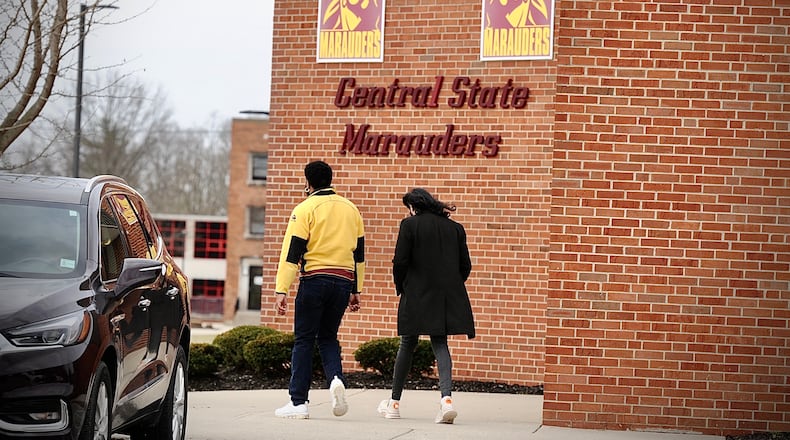The changes are based on an increase in first-time applicants, as well as new scholarship programs.
Central State has already seen a 10% increase in applications of first-year students over last year and has implemented two scholarship programs. The first is the Ohio Classroom Teacher Initiative, a four-year scholarship program for students in the College of Education.
The second, called the DTXS Public School Scholarship Initiative, will grant a $5,000 scholarship to incoming freshmen who attend one of the 10 high schools in the Dayton, Trotwood-Madison, Xenia, or Springfield public school districts. The programs were announced at the investiture of President Jack Thomas in March.
The university is also building the Within Reach program, which offers scholarships to students who started their college degree at Central State and, for any reason, chose not to continue.
“Some students were within reach of graduating with 90% credits or more,” said Curtis Pettis, vice president of administration & CFO. “It’s letting students know we are willing to connect with them, meet with them, and maybe offer financial assistance.”
Administrators also said the growing popularity of Historically Black Colleges and Universities (HBCUs) was a contributing factor to the coming growth.
“Students are seeing HBCUs as a place for great career training and a place to build a sustainable career,” said Harold Dixon, Central State’s dean of enrollment.
The university has enough classrooms and academic space to handle the jump, but the concern currently is the university’s amount of residential housing. Central State is currently in the middle of a $65 million expansion, called Project Innovation, to increase its stock of student housing, add a recreation and wellness center, and make several improvements to other campus facilities.
Additionally, Central State is investing in its online classes and has added several degrees and a cybersecurity certificate in recent years.
“We are referring back to the marketplace and what jobs are showing up,” Dixon said. “We want to offer those programs and degrees that speak to the future. We’re sharing this in our message to students. We have internships available early on. We have those opportunities to engage with companies and communities, creating those connections in career services right away, instead of waiting until junior or senior year.”
Central State is looking at hiring more full-time faculty from a large pool of professors and teachers that currently teach online. Many students currently taking classes have a combination of in-person and online classes, and many professors will also be taking on a similar hybrid teaching model.
“We have that bench strength,” Pettis said. “It’s a new world of students being hybrid. You have to be ambidextrous. Some students are living in Xenia, Beavercreek, Dayton; that’s also where our growth will come from.”
Central State has an admission rate of 58%, but only a 28% graduation rate, and most students who drop off do so between their first and second year.
Central State is working to raise both those numbers, administrators said, and looking to increase student engagement with projects planned in the expansion, like the $10.7 million recreation and wellness center. Among the top two reasons students give for leaving is lack of extracurricular activities, and money.
“We are one of the most affordable institutions. The price is the best you can get for a four-year degree, but a lot of the time, it’s finances back home. We have a lot of first-generation students. Because they contribute to the household and the family, when they’re gone, that makes an impact,” Pettis said.
Central State’s priority application deadline is May 1.
About the Author




